Today, the sketchy Pentagon statements about the USS Carney are starting to make sense. The initial suspicions within the originating statements {GO DEEP} are well founded. Today, the Pentagon is admitting the events in the Red Sea were “much more significant” than originally outlined. Here’s the big picture, and we will go a little deeper.
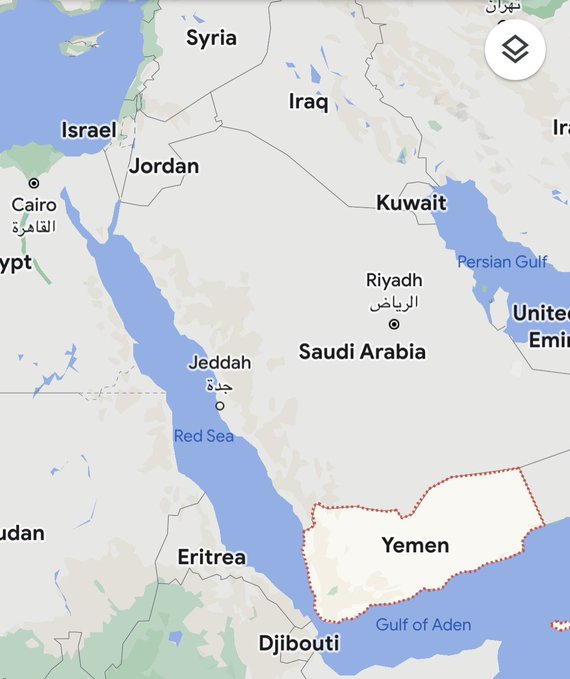 The USS Carney is an Arleigh Burke-class destroyer assigned to USS Ford Carrier Strike Group 12. As part of the October 8th deployment into the eastern Mediterranean, the USS Carney took up a defensive position for the strike group by going through the Suez Canal into the Red Sea. Fortunately, the Carney arrived in the Red Sea, on mission, Wednesday, just hours before four cruise missiles and 15 drones entered the established defensive perimeter airspace.
The USS Carney is an Arleigh Burke-class destroyer assigned to USS Ford Carrier Strike Group 12. As part of the October 8th deployment into the eastern Mediterranean, the USS Carney took up a defensive position for the strike group by going through the Suez Canal into the Red Sea. Fortunately, the Carney arrived in the Red Sea, on mission, Wednesday, just hours before four cruise missiles and 15 drones entered the established defensive perimeter airspace.
The Carney’s interceptions, the defensive activity against the missiles and drones, took place over 9 hours on Wed/Thursday. All of the interceptions happened in commercial airspace, meaning the drones and missiles were targeted to fly at altitudes of commercial air travel. Obviously, the destination of the missiles and drones was/is unknown; however, the Pentagon said “potentially” targeted to hit Israel.
Now keep in mind, this report from CNN (think State Dept) is from a U.S. official that is NOT the Pentagon. Meaning this report is political in nature and slanted to provide the State Dept/political Intelligence Community perspective. Again, this is not a military report; this is a report from the U.S. political angle of government.
CNN — A US warship that intercepted drones and missiles near the coast of Yemen on Thursday encountered a larger and more sustained barrage than was previously known, shooting down 4 cruise missiles and 15 drones over a period of 9 hours, according to a US official familiar with the situation.
The USS Carney, an Arleigh-Burke class destroyer that traversed the Suez Canal heading south on Wednesday, intercepted the missiles and drones as they were heading north along the Red Sea. Their trajectory left little doubt that the projectiles were headed for Israel, the official said, a clearer assessment than the Pentagon’s initial take.
A sustained barrage of drones and missiles targeting Israel from far outside the Gaza conflict is one of a series of worrying signs that the war risks escalating beyond the borders of the coastal enclave.
[…] On Thursday, Pentagon press secretary Brig. Gen. Pat Ryder said the missiles were fired by Iranian-backed Houthi forces in Yemen and were launched “potentially towards targets in Israel.” At the briefing, Ryder said three land-attack cruise missiles and “several” drones.
Some of the projectiles were traveling at altitudes that made them a potential risk to commercial aviation when they were intercepted, the US official said. The drones and missiles were intercepted with SM-2 surface-to-air missiles launched from the USS Carney.
US interceptions of Houthi launches are exceedingly rare, making the timing of this incident, as tensions rise in Israel, more significant. In October 2016, the USS Mason deployed countermeasures to stop an attempted attack in the Red Sea targeting the Navy destroyer and other ships nearby. In response, the US fired sea-launched cruise missiles at Houthi radar facilities in Yemen. (read more)
We have already addressed the originating problems with the Pentagon report. Just the 1,300-mile flight distance alone is problematic when attaching this origination to the Houthis. Since when did this Yemen rebel group gain missiles and drones that could target at such distances? Something doesn’t add up.
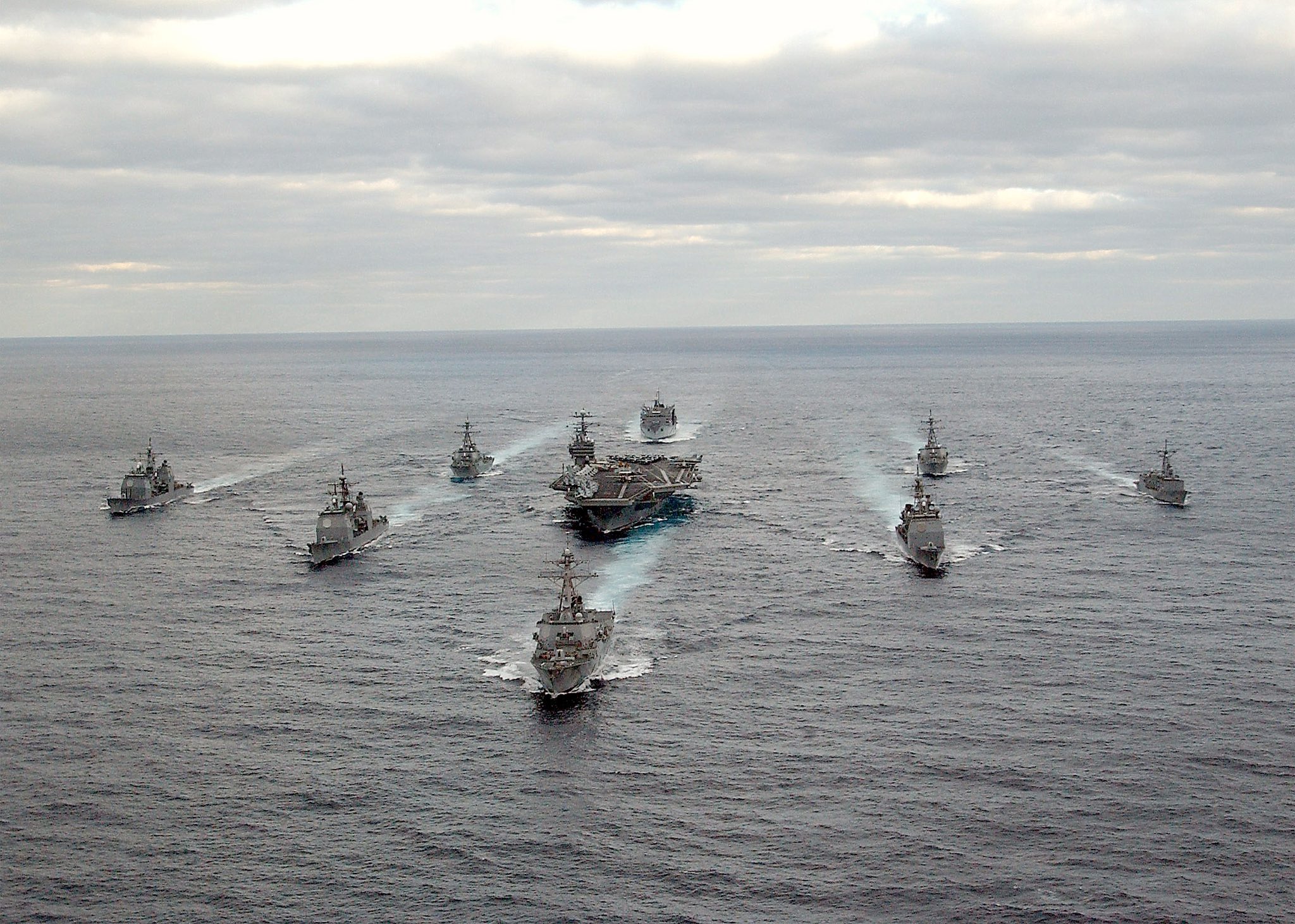 In reality, the original Pentagon statement does make sense. They don’t know where they came from, and they don’t know where they were going. However, they entered a defensive perimeter established by USS Ford, via the battleship Carney, as part of their strike group mission and formation.
In reality, the original Pentagon statement does make sense. They don’t know where they came from, and they don’t know where they were going. However, they entered a defensive perimeter established by USS Ford, via the battleship Carney, as part of their strike group mission and formation.
With the carrier strike group in place, the proximity and overall direction of the unknown missiles and drones was a threat. So, we shot them down. That is the standard mission priority.
The political message to CNN, not from the Pentagon, is to firm up the most likely originating location as Yemen and establish the most likely destination as Israel.
However, there are multiple alternatives, one of which is alarming and would also explain the intense sensitivity of the Pentagon in using the word “potentially”; the truth is, they really don’t know. Factually, USS Carney arrived literally hours before this took place, a very fortuitous arrival on mission all things considered.
We can well imagine if the Carney was still navigating the Suez Canal at the time the missiles and drones flew overhead. We, or whoever was the target of 4 cruise missiles and 15 drones, lucked out.
Which brings us to the part of “potential” destinations. Considering the motives and intents of the hostile and opposition elements globally and regionally, there’s just as solid an argument to make that the USS Carney did exactly what it was supposed to do, defend the USS Ford strike group. Meaning, the target could have been the U.S. fleet and the USS Ford itself.
Then we look at “potential” origination. Again, the Houthi’s may have received a very recent Iranian missile capable of delivering a payload over this distance. They did not have them before, but they could be newly acquired; so, the origination could be Yemen. However, it is worth remembering that China is the #1 investor in Yemen, and has a geopolitical relationship in Yemen driven in part by a very nearby Chinese navy military base in Djibouti.
In 2017, China established its first overseas naval base in the small East African country of Djibouti. The base, where perhaps 2,000 Chinese troops are stationed only a few miles from the U.S. Navy’s own Djiboutian base, Camp Lemonnier, set off alarm bells in Washington about Africa’s role in China’s growing military profile. (link)
China has been selling weapons to Yemen as part of the geopolitical alignment between Iran, Russia and China. China also supports the current status of peace between Yemen and Saudi Arabia, and has been working diligently to keep all of their interests aligned.
Were the advanced missiles part of the relationship between China and Yemen?… Or were they Iranian? The former seems increasingly likely, the latter not quite as much.
So, with the Pentagon admitting they are not certain, and with the State Dept motive to downplay the significance, let’s put the process together.
China would have a solid motive for supporting Yemen in the actual targeting of the USS Ford. What faster way to bring the U.S into yet another engagement than by targeting a U.S. aircraft carrier strike group. For Yemen and the Muslim Brotherhood, this would be medal of honor level success, exceeding any joyful targeting of Israel.
The U.S., in this scenario the great satan, is pulled into yet another protracted Middle East quagmire along with prior commitments to Ukraine. Now, with both a European and Middle East conflict, the beneficiaries would be Iran, Russia, China, the Muslim Brotherhood, Turkey, Syria and the list goes on from there. This diverts all U.S. resources away from the Pacific Theater and leaves Taiwan as easy pickings. Smiling panda.
Guess who else would benefit.
Last point, notice how in this scenario no one’s fingerprints are actually -directly- on any of this. Plausible deniability is everywhere.
Funny how that happens?…
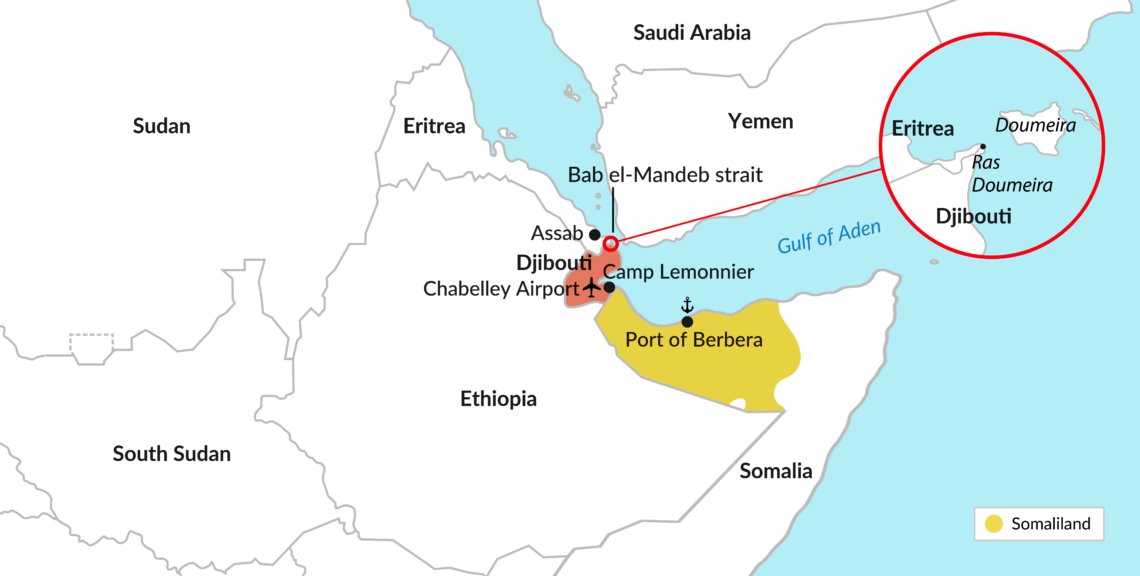
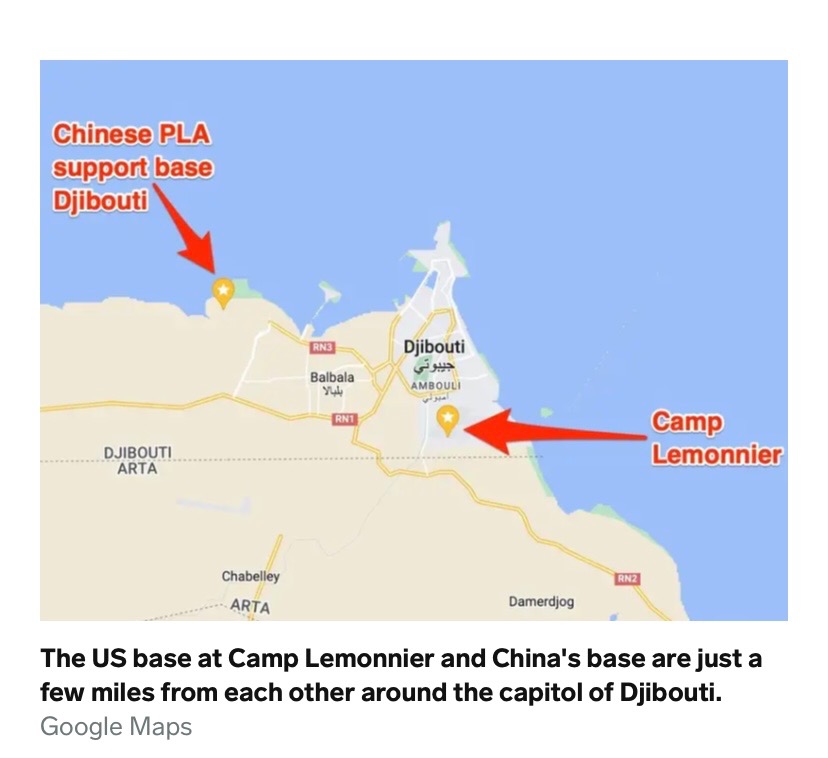

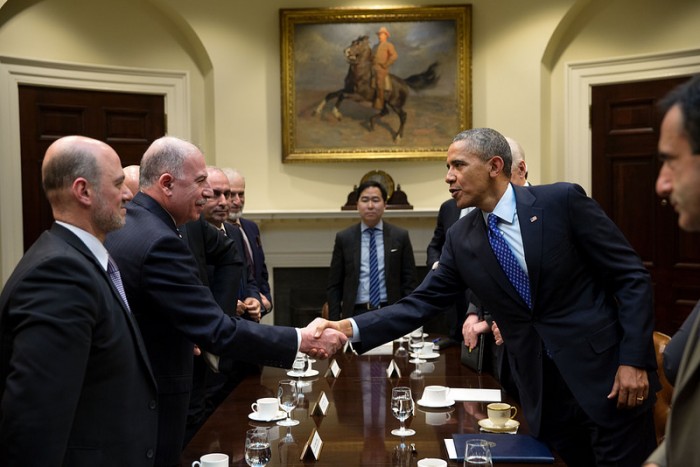
Would it really be that hard for the State Dept or the DOD to ,like, tell the truth? Is it really that hard?? Sheesh!
Yes, as their toungue spontaneously cleaves to the roof of their mouth, with so much force, it blows the top of their head off.
Even witnessing somebody else telling the truth causes them major physically distress, and the pressure of their toungue on their soft pallet, causes their eyes to bulge, and in some cases spontaneous bleeding from eyes, nose and other orifices has been noted.
At least they aren’t in the practice of calling complete strangers who actually had to pass a background check liars.
That is about the right diagnosis. The temptation to use a tourniquet at the throat level should probably be resisted.
I am having a hard time recalling when any of our agencies told the truth.
When was the last time you read news from a source that actually uses primary sources instead of baselessly accusing other news outlets of just running what they are told?
Actual news gathering is dead.
That would be an act of war and America would have to respond by declaring war on China. We are not prepared to defend ourselves in such a war. So can’t be admitted.
Who is “we”? The govt might not be prepared, but lots of us are
I am wondering if our military defense is able to protect us from a high altitude EMP.
“A multi warhead nuclear EMP attack resulting in multiple atmospheric nuclear bursts…spread out over the USA would likely cripple if not destroy the entire power grid. A total power grid failure would require months to even years of recovery work. If the power grid fails, water and natural gas also fail soon after the burst.”
https://commonsensehome.com/electromagnetic-pulse-emp/#Nuclear_EMP_Summary_High_Altitude_EMP
All electricity, electronics, cell phones, vehicle ignitions would be dead. Remember the movie “War of the Worlds”, starring Tom Cruise?
Here is an account of what such a blast would do to a society~it is set in a novel written by William Forstchen: “One Second After”. The book is really good~ quite gripping.
At this time, balloons with EMP devices could probably be launched from within the United States by the probable thousands of infiltrators already present.
Great, what do you call your anti-IRBM system?
omg B I N G O
The reality is we have been lied to about nearly everything of importance since at least the 1940s.
Let’s put our big boy pants on and ask what the interests to the United States would be by tossing us headlong into war with Iran? The U.S. government isn’t taking the bait. Join the team.
The us govt IS the team. I swore an oath to defend the Constitution, that’s the only team I’m on
The Deep state is in full control of the executive branch. Your view of the US government at this time is insanely optimistic.
They know exactly where they came from and where they were going. With advanced telemetry that can be easily figured out. They just aren’t saying. It’s China. Up next: Taiwan
IMESHO, the location of the launch of the missiles would most likely be accurately determined by satellite reconnaissance.
Would this missile launch spotted by Monkey Werx?
Both.
Overhead reconnaissance for $100 please Alex.
The targeting radar on Arleigh Burke ships like the Carney tracks potential targets from point of origin and all along the flight path. And even if they picked up an inbound missile already at altitude they can back-project its origin within some reasonable certainty. They most certainly know where the launch came from. They’re just not saying. But China knows all this. China knows their missiles will be attributed to them. China is not so stupid as to invite a US causus belli.
Cruise missiles and drones can change course in mid-flight. They almost certainly do know where they were launched from. But caution in declaring what their targets were is justified.
Beware the Silkworm.
If the missiles/drones couldn’t reach Israel then it seems obvious they couldn’t reach a target in the Med. Just like Aegis-equiped ships do in the persian gulf, stationing one in the red sea would give 24/7 radar coverage over a large area. I note that Bataan ARG with MEU(SOC)-26 embarked is reported to be ordered from the gulf so I assume transiting the Red Sea. Providing air defense from the Ford CSG makes sense. Attacking a moving target at sea at long distance without hyper-sonic speed means a great deal of target location uncertainty. That means your anti-ship missile/drone will have to conduct some search tactics with pre-programmed or man-in-the-loop means of target id and initiating attack tactics. Seems like a bit of a stretch.
Note: Houthi rebels
Houthi rebels have expressed support for the Palestinians and threatened Israel. Last week in Sanaa, demonstrators crowded the streets waving Yemeni and Palestinian flags.
Abdul Malek Al Houthi, the rebel group’s leader, has warned the US against intervening in the conflict between Israel and Hamas, threatening that his forces would retaliate by firing drones and missiles, AP reported.
Thursday’s interceptions were the latest in a series of incidents involving drones and US forces in the region.
Note: Houthi rebels
Sudanese authorities announced their decision to break diplomatic ties with Iran on January 4, 2016, after Iranian protesters stormed the Saudi Arabian embassy in Iran. Khartoum stated that they had a belief that Iran was interfering in the region and spreading religious hatred.
Sudan, a close ally of Saudi Arabia, had deployed troops to combat the Iran-backed Houthi rebels in neighboring Yemen, as part of the Saudi coalition.
Support for Saudi Arabia was expressed by the Sudanese government, which was led by then-President Omar al-Bashir. Bashir was removed from power in April 2019 as a result of a military coup and was placed under arrest.
https://www.rt.com/africa/584551-sudan-iran-resume-relations/
Yes and the Russians have a front row seat to watch all the goings on. Russian EW has very good ears and eyes.
https://maritime-executive.com/article/sudan-s-leader-agrees-to-host-russian-naval-base-on-red-sea
Everyone in the area. I am stilling looking for where Ethiopa on this?
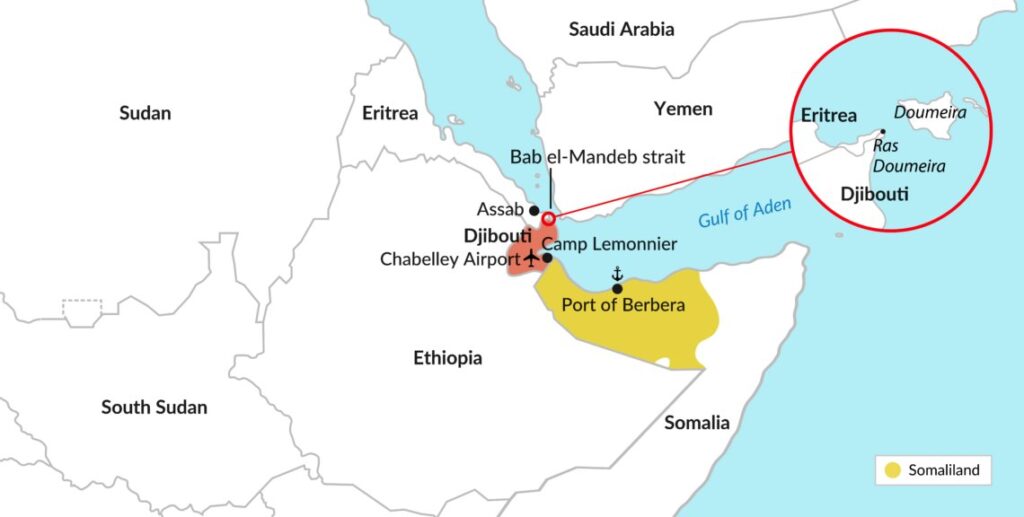
Ethiopia and Russia have had a very long and friendly relationship of mutual support. Ethiopia refused to condemn Russia over Ukraine and sent volunteers to fight with Russia against NATO in Ukraine. That is where Ethiopia stands.
Aslo like Russia Ethiopia is a Fundamentalist Christian Majority nation. That dates back 2000 years.
Communists have overtaken Ethiopia as the Belt and Road. A physician from Ethiopia at the VA hospital told us. The communists build schools there.
They know exactly where those missiles came from and exactly when they were launched. What altitude they were flying and probably what kind of missile it was. Missiles have a distinct signature. they know. we don’t.
The target was the battle group not Israel.
This is what a bumbling spaghetti’Os brain President gets you.
When the Commander in Chief was president no one would dare. Now their actively try to shoot themselves a carrier.
An Iranian or a Houthi general would become a national hero if one could manage that task.
I agree except bumbling brain isn’t calling the shots. In fact, it is probably a Committee of “Stakeholders” making these decisions. You know, ‘a consensus’ .
I agree with you. The mumbles is not in charge. He is definitely not calling the shots unless you mean the shots in his diaper.
This has been used as a talking point.
The battle groups first mission is to protect each and every ship in that group. Especially that carrier. The commander doesn’t need permission to launch his missiles if it’s to protect the group. Each ship has it’s own mission. once they detected those missiles and drones they went to battle stations. As Sundance said. Most missiles have a 1000 mile range unless someone has come up with a better technology. The commander knew that they were the target. He can shoot down anything he wants, using anything in his arsenal if he feels that the battle group is in jeopardy. I r a n, using their proxy just tried to take out a carrier in retaliation for their beloved general that president trump took out.
Plain and simple
Yes to all Overwatch. Except the reports specifically state they were Land-Attack cruise missiles. If that is accurate they would not be optimum for hitting a moving target like a ship maneuvering offshore. Possibly the type of missile was misreported. But just as possible they were aiming at a stationary ground target.
You are correct but as we all know, true and factual information is hard to come by in this day and time.
Quite convenient in the first place for the strike force to have arrived in the nick of time–hours by report–to intercept the missiles and drones. Any possible coordination between the two raises a host of other possible reasons for the engagement, i.e. were the missiles/drones fired only when they could be intercepted and were never intended to arrive at any Target?
The Target may have been the two USN assault ships Bataan and Carter Hall in transit thru the Red Sea. Which are packed full of Marines and equipment headed to Israel. Hitting them would have been a major propaganda blow to the US.
USS Carney was most likely dispatched to the Red Sea from the USS Ford group off of Israel to escort them.
With a little encouragement from Iran. The Houthis were most likely more than eager to launch an attack even if it failed to hit any ships. It was just a little test.
We are the great satan. And being in their neighborhood with as much hardware as we have will give them many opportunities to hit our people and equipment. Nothing good comes from this.
the military probably knows more than it is telling. E.g., if the missile was guiding itself via radar then those signals may have been intercepted and the type of missile would be known. Also the flight profile, speed/altitude – may also be a giveaway. The launch site may also be known.
Attacking a CBG w/ 4 missiles and some drones doesn’t make much sense if they wanted to hit something.
These psychopaths are desperate for a war. Almost any war, it seems.
They failed to bait the Russians into one, who they completely underestimated, and who thoroughly outsmarted them.
So now they are back to the Middle East, lighting every fuse they can around that perennial powder keg.
The fuse was lit Oct 7th. The fireworks show has started.
Not sure it was the first engagement, just the most publisized:
Amir Tsarfati
In the last three days, ten attacks were carried out in Syria and Iraq against American forces, which resulted in several casualties.
41.4K viewsAmir, 20:44
https://t.me/s/beholdisraelchannel
Breitbart put out this article that dances around the idea of China’s harassment of the US but doesn’t dare mention what is going on in the Middle East. Andrew certainly would have connected these dots by now.
“China Ramped up Harassment of the U.S. Military After Joe Biden’s Botched Afghanistan Withdrawal”
https://www.breitbart.com/national-security/2023/10/21/china-ramped-up-harassment-of-the-u-s-military-after-joe-bidens-botched-afghanistan-withdrawal/
I directed commenters to this article, just in case people are actually interested.
Heads of State come and go. Pull back from personalities of the day, they will soon die and another will rise. Refocus on why wars have become world wars, why nation is against nation. Stop weighing “the merits of war” or which nation is justified or which nation and personality of the month the US should finance, supply or side with.
None of these issues uncover the purpose of world wide continual wars. And there is a purpose. Peacekeepers is just another mask, a veil. Peace is not the purpose of war or in the interest of anyone who covets great wealth.
Instead of the word “uprising” use the word “sabotage”. Diversity is not the value Division is the goal because United we stand divided we fall. Typical politicians and their civil counterpart, the owners, CEO’s Board Members of successful corporations, are Saboteurs.
Please read or watch, you’ll be glad you did no matter your party, nation, religion:
All Wars Are Bankers Wars – a 2013 documentary written and narrated by Michael Rivero.
Or read the summary as well by the quite brilliant Dr. Joseph Mercola, MD who brought you Truth exposing the Covid-19 fiasco which caused Mercola to be fired from his position as a Professor teaching Medicine.
https://articles.mercola.com/sites/articles/archive/2023/10/21/all-wars-are-bankers-wars.aspx?ui=d09da0bfd546b07e5288c76a784fbddd0af44f1efe83ea9941dab242f1c7e364&sd=20230730&cid_source=dnl&cid_medium=email&cid_content=art1ReadMore&cid=20231021&foDate=false&mid=DM1480219&rid=1943709992
If you will take the time the puzzle pieces come together, the dots connect. What a sound mind calls ruthlessness, terror or horrific or currently; atrocities, is just a price millions of Saboteur’s intend the not-wealthy pay with the blood of their sons. Removing your rights with their left hands they donate your sons with their right hands.
If you commit to fight, commit to the Only Living God to fight the battles He is in. Or you cannot win, unless He goes before you and is your rear guard.
I can not attest the accuracy but all 3 are from someone that has long monitored wire reports
My info says the “target” was USS Bataan (LHD-5) transiting from the Gulf of Oman to the Red Sea (and with an ultimate detsination off Israel ??) with Amphibious Ready Group (ARG) and the 2500 man 26th Marine Expeditionary Unit (MEU) aboard .
These elements of 26th MEU, based at Camp Lejeune, N.C., include Battalion Landing Team 1st Battalion, 6th Marines; Marine Medium Tiltrotor Squadron 162 (Reinforced) and Combat Logistics Battalion 22 …
Very possible.
Dickie, why do you parade potentially harmful military designations online in the current atmosphere of total world war? Open mouths can sink ships.
Avi2
God’ s Divine Providence.
The uniparty gets boots on the ground via missile attacks on the MEU ships.
Deployed US forces, under orders for “de-escalation” are caught with their pants down as muslim countries attack and destroy israeli and US assets. Turkey feeds them intel gathered as a Nato “ally” and participates in attacks as erdogan declares himself caliph of the world ummah.
Tens of millions of muslim “asylum seekers” in Europe tale over and make their 700 year pre-crusades reign of terror look like disneyland. (Slaughtering all Europe based US forces also)
Ukraine surrenders as they run out of other people’s ammo and cash.
Here in the US:
Draft is reinstated.
Young marxist/blm antifa and recent military aged border invaders are conscripted and trained.
Concurrently the last vestiges of the pre “woke” military are deployed overseas, receiving limited supplies and support
while operating under strict rules of engagements, limited mobility orders and running out of ammo, they become sitting ducks to be slaughtered by blood drunk islamofascists.
This creates domestic unrest and the “NewArmy” is deployed within the US to put down “traitors” (ie anyone opposing the marxist cabal)
Most of the New Army is lost, but the political opposition to the marxists is destroyed, taking the majority of their “problems” off the board.
China and India go to war. Pakistan, malaysia, etc, along with Russia, having become indebted to the chinese, side against India. China, along with Norks, take over taiwan and south korea. The Japanese declare neutrality as their population, in decline for decades, and a limited military, has no means to fight. The rest of asia surrenders,
Canada just euthanizes all those not publicly and vocally supportive of the marxist government without any significant opposition.
Africa is left to self immolate.
in South America, the marxist states ally and sweep the continent.
Australia’s socialist government surrenders to the chinese.
The UN becomes the global communist government and a period of uneasy truce between the communists and the ummah lasts for 50 years before eventually the communists destroy their theological totalitarian allies. A rival power cannot be condoned for long nor do the marxist elites care for the primitive religionists.
The marxists get their 1000 year utopia.. Just a bit more to the left than the reich’s national socialist’s dreams.
radtraveller, here’s a few notes according to some observers:
1) ‘…running out of ammo…’:
It appears that the US plan is to run out of ammo without ever mobilizing to fight a war, with its decimated industrial base incapable of resupplying fast enough to support major military action against anyone.
This appears to be one of the main reasons for the US pumping Ukraine, and a secondary reason for the Israel conflict.
2) ‘…domestic unrest and the “NewArmy”…deployed within the US to put down “traitors”…Most of the New Army is lost, but the political opposition to the marxists is destroyed,…’
The US citizenry will not rise up against the state to any significant degree, by either civil action or violence, this was proven by the plandemic.
Among other things, the US plandemic was a test of the mettle of the citizenry vs. the state systems imposing tyranny by mind control (propaganda and censorship), steered mass pyschosis, and mechanisms exploiting fear of job loss and ostracization.
The test succeeded, i.e. the citizenry overwhelmingly complied with the tyranny en masse. The people are largely ignorant and low-literacy (resulting from government schools), easily manipulated by propaganda and censorship, and fearful of losing living-wage jobs because of debt.
The cognitive dissonance has been cemented by government allowing things to return to “normal”, the people gladly put the plandemic behind them. Look – another fun holiday is coming up, with parties and candy! Are your fall decorations up yet? Did you see the football game yesterday? Bread and circuses, while the debt monster grows closer to bringing the whole thing down.
A bombshell yesterday about misdeeds by the shot pushers causing grave genetic damage to billions of people, and no one notices:
https://viralimmunologist.substack.com/p/explosive-story-health-canada-admits
The state control of the citizenry is complete.
3) ‘China and India go to war’
India, Russian, and the rest of BRICS+ are beholden to China, the world’s new industrial and STEM powerhouse rising to hegemon. They joined China because there is no other way. There will be no war between these nations.
(The US also joined China, in stealth mode. The whole world is now dependent on China.)
4) ‘Canada just euthanizes all those not publicly and vocally supportive of the marxist government without any significant opposition.’
That is a longer-term possibility, with the use of the “psychiatric disorder diagnosis” tool of the authoritarian state to incarcerate dissenters, and the rhetoric of “public safety threat” and normalizing of state-administered euthanasia.
5) ‘Australia’s socialist government surrenders to the chinese.’
Australia is part of Five Eyes, therefore part of the US Bloc. So the above is likely in a roundabout way, since the self-weakening US Bloc is effectively surrendering to the Chinese while pretending it is not.
6) ‘The UN becomes the global communist government’
The UN is a puppet of the rising Chinese hegomon. As are the globalists including WEF, and Five Eyes. All understand where the real power lies, all are beholden to China now. Everything else is facade, theater.
7) ‘The marxists get their 1000 year utopia’
That is the red herring. The real goal of the powerful is more more power, nothing else. The socialist ideals are just a tool to manipulate the useful idiots. (See Orwell’s 1984)
You forgot the part where Biden carries out his threat to use nukes against the American people, but has his buddies in Moscow and Beijing do it. The parts of America hit by the attacks those that were giving DC the most trouble.
Look up Operation Cyanide and watch the docuseries Sacrificing Liberty (on Rumble) to see just how evil this US-Israel alliance can get.
They’ve tried to use a false flag to initiate nuclear war decades ago – this is all looking just like a replay now.
I’ve replied to this in a newer thread, but I think the authors you have quoted got hold of the wrong end of the stick. Try instead to read the book Foxbats Over Dimona by Ginor and Remez. A Soviet plot to instigate a war in the MidEast before Israel acquired nuclear weapons.
(See also reference to newer research and discussions:
https://www.worldsecuritynetwork.com/Russia/Isabella-Ginor-and-Gideon-Remez-/The-Six-Day-War-as-a-Soviet-Initiativ-New-Evidence-and-Methodological-Issues
Long read but well worth it for those interested in modern history.)
Amazing analysis. Thank you.
We’ll see what we see.
Don’t count out Egypt, all about clearing globalists from their country, and Saudi Arabia, who know their prosperity lies in nationalism.
Should be interesting to see the new BRICS on Jan 1 2024, where so many who want to be in control need to pretend to trust each other, unless the new BRICS gets blown out of the water and never happens.
Spot on. Big panda wants Taiwan so bad they can taste it. Disgusting.
I suspect that:
The current array of dangerous conflicts: Middle East and Ukraine, is a direct offshoot of big power competition to dominate trade between asia and europe.
The key players are:
1. (Iran, Russia, China bloc-Hamas is their proxy)
and
2. (US, Britain, Saudi Arabia bloc-Israel is their proxy)
One model is the Chinese inspired “BELT-ROAD-INITIATIVE”. THAT must pass thru Ukraine, hence the situation THERE. This is preferred by the Iran, Russia, China bloc. Follow the money!
The competing model is the India-Saudi Arabia-Jordan-Israel-Europe trade corridor. This is favored by the US, Britain, Saudi Arabia bloc. Follow the money!!
Hence the instability around Israel caused by Iran (a strategic partner with both Russia and China).
You can figure out the rest.
This article is precisely on Target. Iran is working together with Moscow and Beijing. Between the two of them Moscow and Tehran can easily soon control a vast majority of the world oil and gas production. Iran just needs to move on Saudi Arabia, and they would automatically pick up the small oil states on the Persian Gulf, probably including Kuwait. You would think US forces in Iraq could prevent that with help from our fleet, but what if through a series of provocations and actions against our forces in Syria, the Biden administration were led to withdraw from Syria and Iraq? I suspect that is what is being set up. The purpose is to clear the way for the Iranian invasion of Saudi Arabia. It is not only oil and gas, but the possession of Mecca would make the Iranians the official protector of the holiest site in Islam. To some of the Mullahs in Tehran that would be more important than the money from the oil. But between the money and the increased prestige, they could undertake a program that would eventually allow them to go for Israel. At the same time, as this article implies China could go for Taiwan and anything else they want in the Western Pacific. Maybe including the Philippines, or some of their territory, and likely to include Vietnam or at least its maritime control zone. All these things have been claimed by China anyway.
By the way, ads keep appearing on my phone screen here that block my view of what I am writing.